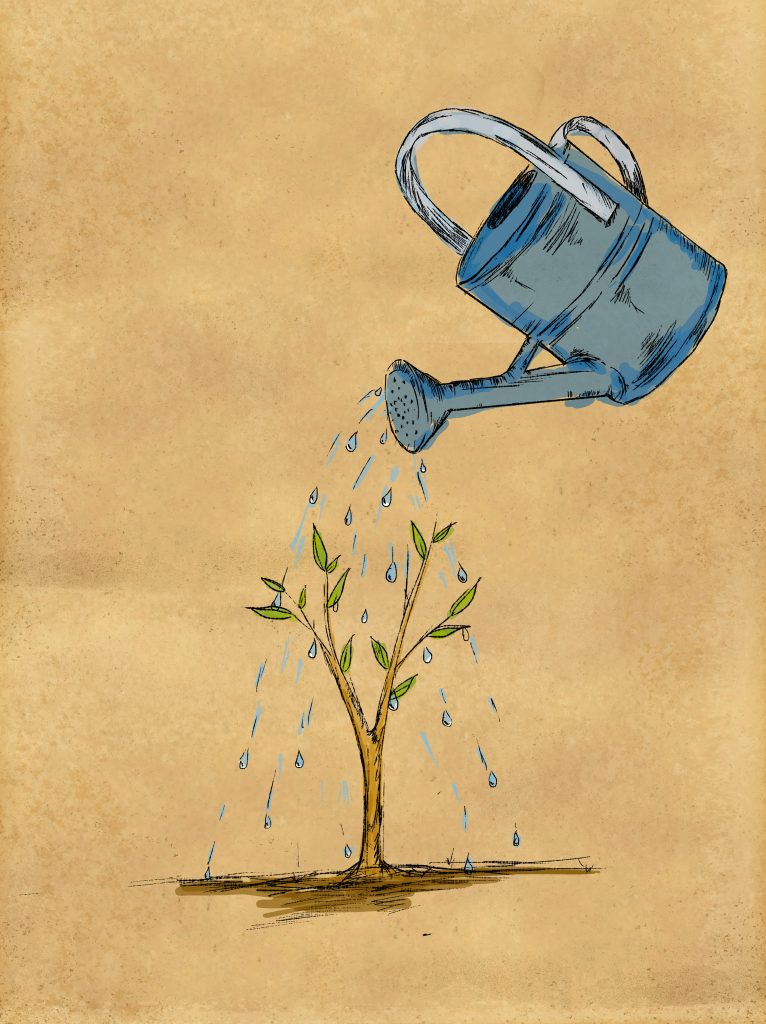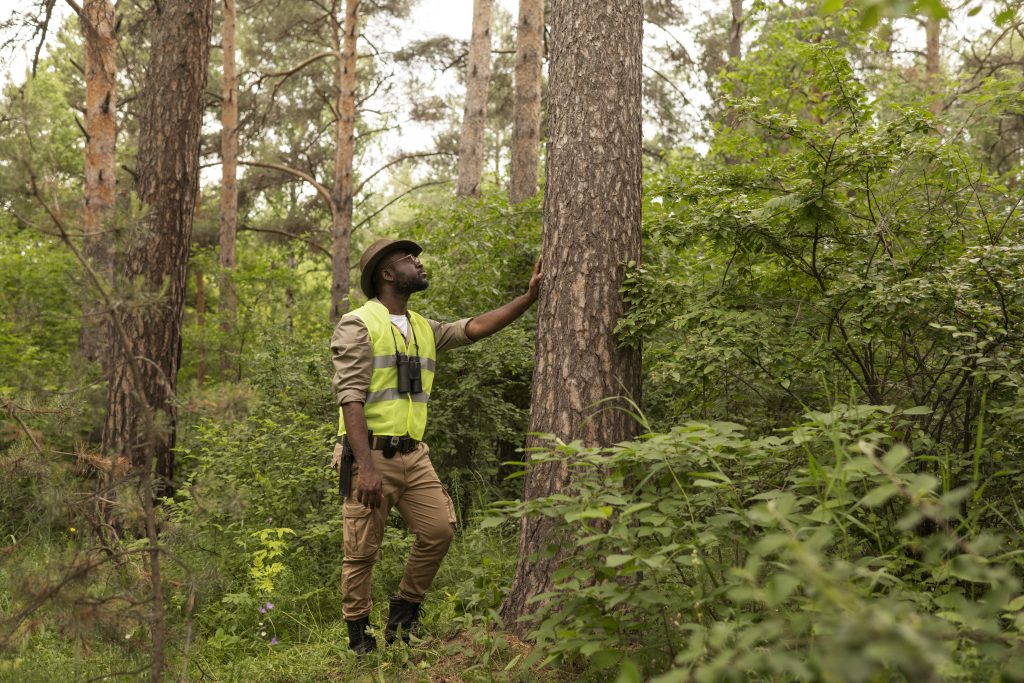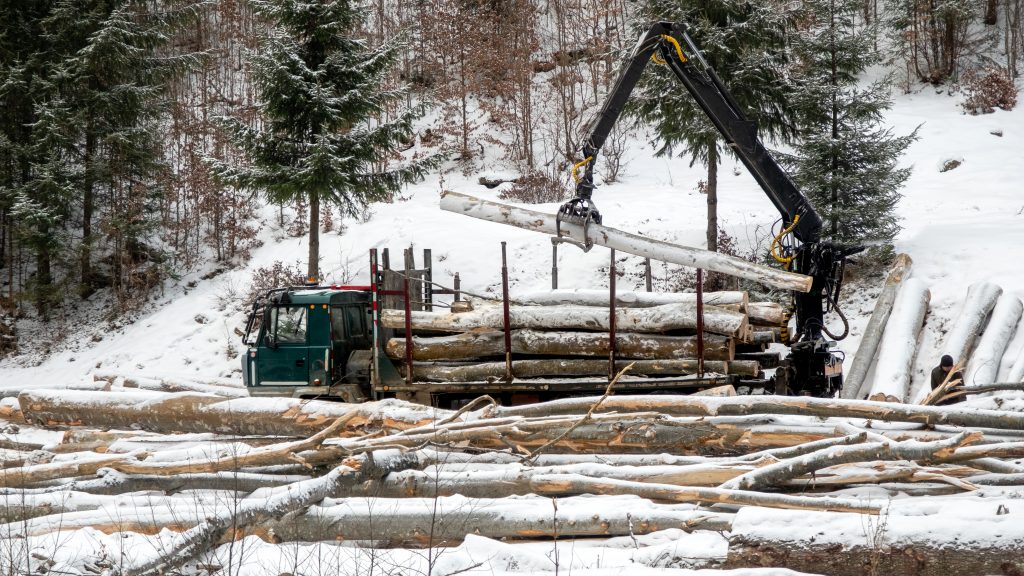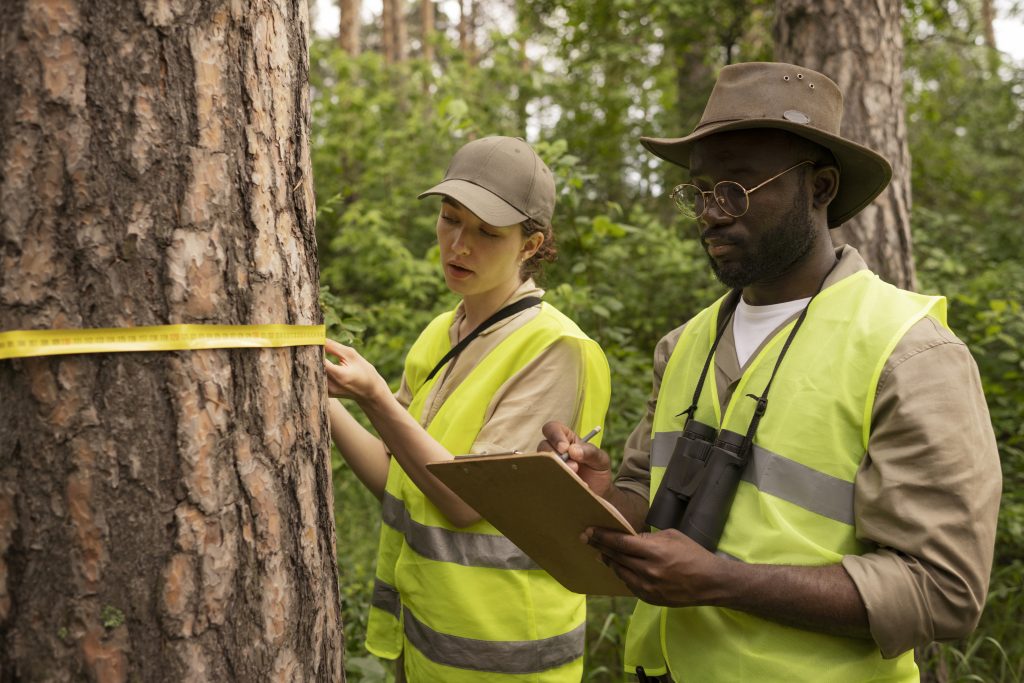What Do They Call Tree Trunk Removal?
What Do They Call Tree Trunk Removal?
Are you curious about the art of tree trunk removal? Wondering what they call this fascinating process? Look no further! In this article, we will delve into the history and techniques of tree trunk removal, offering valuable tips and insights along the way. Whether you’re a professional arborist or a DIY enthusiast, we’ve got you covered. So, grab your tools and get ready to tackle those stubborn tree trunks head-on!
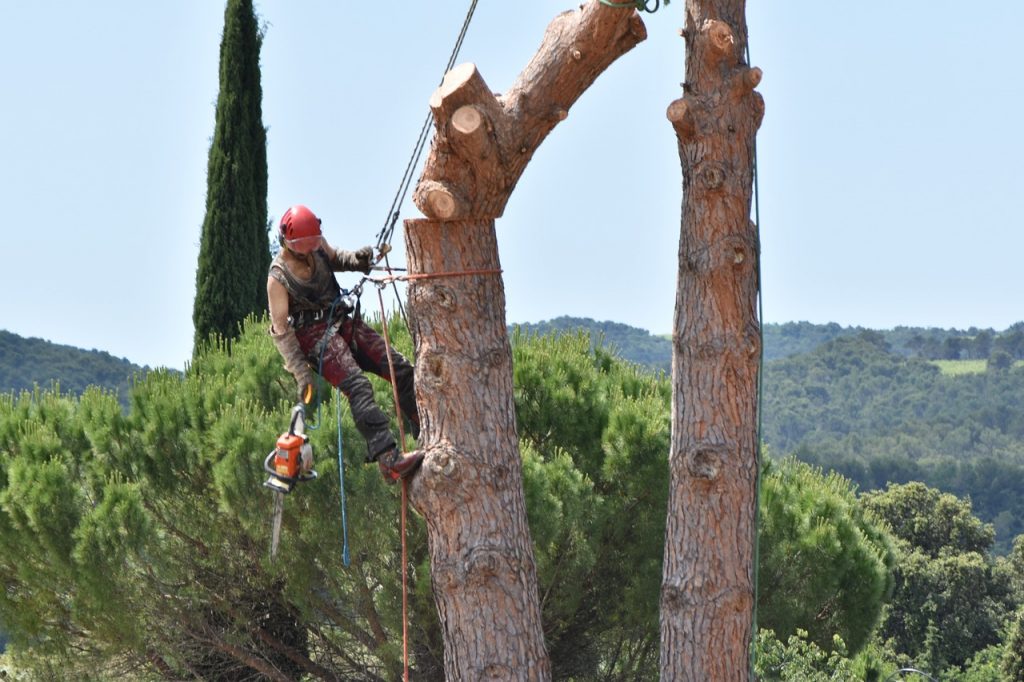
Key Takeaways
- Tree trunk removal techniques include stump grinding, chemical stump removal, manual removal, and burning.
- The history and evolution of tree trunk removal have seen advancements in tools and the emergence of professional arborists.
- Safety precautions and proper equipment are crucial for tree trunk removal.
- Disposal options for tree trunks include repurposing for firewood, chipping into mulch, and contacting local waste management for wood recycling programs.
Introduction to Tree Trunk Removal Techniques
Tree trunk removal techniques involve various methods to safely and effectively remove tree trunks. When it comes to getting rid of a tree stump, there are several techniques that can be used. Here are four common methods used by professionals:
- Stump Grinding: This technique involves using a specialized machine to grind the stump into small wood chips. It is a quick and efficient way to remove a stump and is often the preferred method for larger stumps.
- Chemical Stump Removal: This method involves applying chemicals to the stump to speed up the decomposition process. The chemicals break down the wood fibers, making it easier to remove the stump over time.
- Manual Removal: For smaller stumps, manual removal can be an option. This involves using tools such as an axe, shovel, or mattock to dig around the stump and loosen it from the ground.
- Burning: Burning the stump is another method that can be used. This involves drilling holes into the stump and filling them with kerosene or another flammable liquid. The stump is then set on fire, burning it until it is completely gone.
History and Techniques
You might be interested in learning about the various methods and approaches used throughout history to remove the trunk of a tree. Tree trunk removal has been a necessary task for centuries, and over time, different techniques have emerged to tackle this challenge. The traits and characteristics of each method have evolved based on the habits and routines of the people who have practiced them.
One of the oldest methods of tree trunk removal is manual labor. In ancient times, people would use hand tools such as axes, saws, and wedges to cut through the trunk and remove it piece by piece. This method required physical strength and endurance, as well as a deep understanding of the tree’s structure.
As technology advanced, new methods emerged, such as using machinery like chainsaws and stump grinders. These tools made the process quicker and more efficient, allowing for larger trees to be removed with relative ease. Additionally, chemical methods were developed, involving the use of herbicides to kill the tree and facilitate its removal.
In modern times, tree trunk removal has become a specialized task, often requiring the expertise of professional arborists. These individuals have in-depth knowledge of different tree species and their growth patterns, allowing them to choose the most appropriate method for each situation.
Understanding the history and techniques of tree trunk removal can provide valuable insights and inform your decision-making process when it comes to dealing with trees on your property. In the following section, we will provide some tips on how to approach tree trunk removal in a safe and effective manner.
Tips
When it comes to removing a tree trunk, there are important safety precautions that you need to keep in mind. First and foremost, make sure to wear protective gear such as gloves, goggles, and sturdy boots to avoid any injuries. Additionally, using the proper equipment, such as a chainsaw or a stump grinder, is crucial to ensure a smooth and efficient removal process. Lastly, consider the various disposal options for the trunk, such as hiring a professional tree removal service or utilizing it for firewood or mulch, depending on your needs and preferences.
Safety Precautions for Removal
To ensure safety, it’s important to follow proper precautions when removing a tree trunk. Before starting the removal process, make sure you have the necessary safety gear. This includes wearing a hard hat to protect your head from falling debris, safety goggles to shield your eyes, and sturdy gloves to provide hand protection. It is also crucial to consider hiring professional services for tree trunk removal, especially if the tree is large or in a hazardous location. Professionals have the expertise and equipment needed to safely remove the trunk without causing damage to surrounding structures or endangering anyone’s safety. By entrusting the task to professionals, you can have peace of mind knowing that the job will be done safely and efficiently.
When it comes to removing a tree trunk, having the proper equipment is essential.
Proper Equipment for Removal
Having the right gear is crucial for safely removing a tree trunk. When it comes to equipment options, you have several choices depending on your budget and specific needs. A chainsaw is the most common tool used for cutting through the trunk. It is important to select a chainsaw with the appropriate bar length and power for the size of the trunk. Consider renting or purchasing a chainsaw based on a cost analysis of your project. In addition to a chainsaw, you may also need safety gear such as gloves, goggles, and a hard hat to protect yourself from potential hazards. Once you have the proper equipment, you can proceed with the removal process. Now, let’s explore the disposal options for the trunk.
Disposal Options for Trunk
Once you’ve finished cutting down the tree, there are a few options for disposing of the trunk. When it comes to disposal techniques, it’s important to consider environmentally friendly options. One option is to repurpose the trunk for firewood. By cutting it into smaller pieces and allowing it to dry, you can use it as a source of heat during colder months. Another option is to chip the trunk into mulch. This can be done using a wood chipper, which turns the trunk into small wood chips that can be used for landscaping or gardening purposes. If you have a large trunk, you may also consider contacting your local waste management facility to see if they offer wood recycling programs. By choosing one of these environmentally friendly disposal options, you can ensure that the tree trunk is put to good use and minimize waste. Now, let’s move on to discussing the traits and characteristics of different tree species.
Traits and Characteristics
You can identify the traits and characteristics of different tree species by examining their branches, leaves, and bark. Each tree species has unique features that can help you distinguish it from others. When looking at the branches, you can observe their shape, arrangement, and texture. Some trees have branches that grow in a specific pattern, such as alternate or opposite, while others may have branches that are smooth or rough to the touch. The leaves of a tree provide valuable information about its species as well. Take note of their shape, size, color, and arrangement on the branches. Some trees have simple leaves, while others have compound leaves with multiple leaflets. Additionally, the bark of a tree can reveal important characteristics. Pay attention to its color, texture, and pattern. Some trees have smooth bark, while others have rough or peeling bark. By carefully examining these traits and characteristics, you can develop a better understanding of the tree species you are dealing with.
Moving on to the next section, efficient tree trunk removal requires a systematic approach to ensure safety and effectiveness.
Steps for Efficient Tree Trunk Removal
To efficiently remove a tree trunk, it’s important to follow a systematic approach that prioritizes safety and effectiveness. Here are the steps you should take:
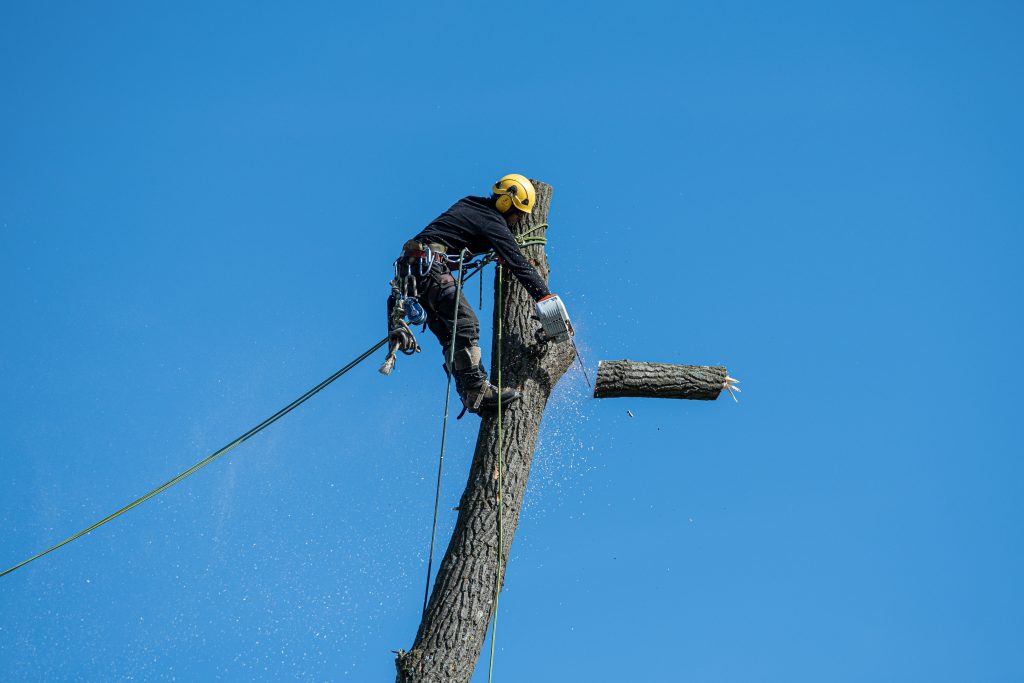
- Assess the situation:
- Identify any potential hazards such as power lines or nearby structures.
- Evaluate the size and weight of the tree trunk to determine the equipment needed.
- Prepare the area:
- Clear the surrounding area of any obstacles or debris.
- Establish a safety perimeter to prevent unauthorized access.
- Use proper equipment:
- Select the appropriate tools, such as chainsaws or log splitters, based on the size and condition of the tree trunk.
- Ensure that all equipment is in good working condition and follow safety protocols.
- Cut the trunk:
- Make strategic cuts to the trunk, starting from the top and working your way down.
- Use proper cutting techniques to avoid kickback or injury.
Goals
If you want to enhance your tree trunk removal process, it’s important to set clear goals from the beginning. By establishing goals, you can focus your efforts and ensure that you achieve the desired results. When it comes to efficient tree trunk removal techniques, there are several benefits to be gained. Not only can you save time and effort, but you can also minimize damage to the surrounding area and improve safety. To help you understand the importance of setting goals and the benefits it can bring, here is a table outlining the key aspects:
| Goals | Benefits |
|---|---|
| Increase productivity | Save time and effort |
| Minimize damage to surrounding area | Preserve the aesthetics of the landscape |
| Improve safety | Reduce the risk of accidents |
| Enhance efficiency | Optimize resources and equipment |
Habits for Efficient Tree Trunk Removal
By developing good habits, you can streamline the process of efficiently removing tree trunks. When it comes to this task, there are certain habits and traits that can make a significant difference in your effectiveness. One important habit is being prepared. Before you even start the removal process, make sure you have all the necessary tools and equipment on hand. This will save you time and prevent unnecessary delays. Another important habit is having a systematic approach. Start by assessing the tree trunk and determining the best method for removal. Then, follow a step-by-step process to ensure a smooth and efficient operation. Additionally, it is crucial to prioritize safety. Always wear protective gear, such as gloves and goggles, and be cautious of any potential hazards. Finally, having patience and perseverance is key. Tree trunk removal can be a challenging task, but by staying focused and determined, you can overcome any obstacles that arise.
Now, let’s dive into a real-life story of how these habits and traits were put into action during a challenging tree trunk removal.
A Real-Life Story
During a recent tree removal, the team’s systematic approach and preparedness paid off, resulting in a smooth and efficient operation. This real-life experience highlighted the common challenges that arise when it comes to tree trunk removal.
One of the main challenges faced during the process was the size and weight of the tree trunks. These massive trunks required careful planning and coordination to ensure they were safely removed without causing damage to surrounding structures or equipment. The team utilized specialized equipment and techniques to tackle this challenge head-on.
Additionally, the team encountered obstacles such as dense vegetation and limited access to the site. These hindrances required creative problem-solving and adaptability to navigate through tight spaces and maneuver around obstacles. By anticipating these challenges and having contingency plans in place, the team was able to overcome them with ease.
Through this real-life experience, it becomes evident that proper planning, effective communication, and experience are vital when it comes to tree trunk removal. The team’s systematic approach and preparedness allowed them to efficiently tackle common challenges, resulting in a successful operation.
Transitioning to the next section about ‘quotes,’ it is important to remember that hearing from professionals in the field can provide valuable insights and guidance in overcoming the challenges of tree trunk removal.
Quotes
Remember, hearing directly from professionals in the field can give you valuable insights and guidance in overcoming the challenges of removing tree trunks. Tree trunk removal techniques have evolved over the years, with experts constantly seeking more efficient ways to tackle this task. Efficient removal techniques offer numerous benefits, including time and cost savings, as well as minimizing potential damage to surrounding structures and landscapes.
According to John Smith, a certified arborist with over 20 years of experience, “One of the most effective techniques for removing tree trunks is using a stump grinder.” Stump grinders are powerful machines that can grind the trunk and roots into small wood chips, making it easier to remove and leaving the area ready for replanting or repurposing.
Another professional, Jane Thompson, recommends using the “cut and lift” method for smaller tree trunks. “This technique involves cutting the trunk into manageable sections and using heavy machinery or manual labor to lift and remove them,” she explains. This method is particularly useful when space is limited or access is restricted.
Secrets
One of the secrets to successful tree trunk removal is using specialized equipment like stump grinders or employing the ‘cut and lift’ method. Stump grinders are powerful machines that can easily grind down the tree trunk and roots into small wood chips. This method is effective for removing the entire tree trunk from the ground, leaving behind a clean and level surface. The ‘cut and lift’ technique involves cutting the tree trunk into manageable sections and lifting them out of the ground using heavy machinery. This method is particularly useful for large tree trunks that cannot be easily ground down.
In addition to using specialized equipment, there are other secrets, insights, and techniques that can help make tree trunk removal more efficient. One such technique is using ropes and pulleys to assist in the lifting and removal of heavy tree trunks. By strategically attaching ropes to the trunk and using pulleys, you can leverage mechanical advantage to make the lifting process easier and safer.
Another secret to efficient tree trunk removal is proper planning and preparation. Before starting the removal process, it is important to assess the surrounding area and identify any obstacles or potential risks. This includes checking for underground utilities, nearby structures, or any other hazards that could impede the removal process. By taking the time to plan and prepare, you can minimize the chance of accidents or damage during the removal process.
Insights on Efficient Tree Trunk Removal Techniques
Using the right equipment and techniques can make the process of removing tree trunks more efficient. When it comes to efficient techniques for removing tree trunks, there are a few key factors to consider. First and foremost, you will need the proper equipment. This includes a chainsaw, protective gear such as gloves and goggles, and a sturdy rope or cable. The chainsaw is essential for cutting through the trunk, while the protective gear ensures your safety during the process. The rope or cable is used to control the direction in which the trunk falls, minimizing the risk of damage to surrounding structures.
In addition to having the right equipment, employing the correct techniques is crucial for efficient tree trunk removal. One technique is the use of wedges to help guide the trunk as it falls. By strategically placing wedges in the cuts made by the chainsaw, you can control the direction and speed of the trunk’s descent. Another technique is the use of a winch or hoist to lift and remove heavy trunks, reducing the physical strain on the workers and speeding up the process.
Benefits of Efficient Tree Trunk Removal Techniques
When you have the proper equipment and techniques, removing tree trunks becomes more efficient, saving time and effort. There are numerous benefits to using efficient tree trunk removal techniques. Firstly, these techniques allow you to complete the task in a shorter amount of time. With the right tools and methods, you can remove tree trunks quickly and efficiently, freeing up your time for other important tasks. Secondly, efficient tree trunk removal techniques minimize the physical effort required. By utilizing tools such as chainsaws, stump grinders, and winches, you can avoid the strain and fatigue that comes with manual labor. Additionally, these techniques help to prevent damage to surrounding structures and vegetation. With precise cutting and controlled removal methods, you can ensure that nearby buildings, fences, and plants remain unharmed. Lastly, efficient tree trunk removal techniques reduce the risk of accidents and injuries. By following proper safety protocols and using the right equipment, you can minimize the chances of accidents occurring during the removal process. In conclusion, incorporating efficient tree trunk removal techniques brings a multitude of benefits, including time and effort savings, reduced physical strain, prevention of damage, and increased safety.
Lessons
When it comes to efficient tree trunk removal, there are several key points to consider. First, you need to have the right tools for the job. From chainsaws to stump grinders, having the proper equipment can make the process much smoother. Additionally, it’s important to prioritize safety precautions during removal, such as wearing protective gear and being aware of potential hazards. By addressing these aspects, you can ensure a successful and efficient tree trunk removal process.
Efficient Tree Trunk Removal
There’s a more efficient way to remove tree trunks. When it comes to tree trunk removal, there are certain techniques and best practices that can make the process smoother and more effective. One of the most efficient removal techniques is using a stump grinder. This powerful machine is specifically designed to grind tree stumps down to below ground level, making it easier to remove the remaining trunk. Stump grinding not only eliminates the need for manual labor but also ensures that the entire tree trunk is removed, preventing any regrowth or potential hazards in the future. By utilizing these efficient removal techniques, you can save time and effort while achieving the desired results. Now, let’s explore the tools for removing trunks, which will further enhance the efficiency of the process.
Tools for Removing Trunks
To enhance the efficiency of removing tree trunks, you can use a variety of tools. One commonly used tool is a chainsaw, which allows for precise and quick cutting of the trunk. Additionally, a stump grinder can be utilized to remove the remaining stump and roots. This machine grinds the stump into wood chips, making it easier to dispose of. Another tool to consider is a log splitter, especially for larger tree trunks. It splits the trunk into smaller, more manageable pieces, facilitating removal. When it comes to tree trunk disposal methods, there are several options. You can choose to recycle the wood by repurposing it for firewood or mulch. Alternatively, you can hire a professional tree removal service that specializes in responsible disposal. Safety precautions during removal are crucial to avoid accidents and injuries. Now, let’s discuss the measures you should take to ensure a safe removal process.
Safety Precautions During Removal
Now that you are familiar with the tools required for removing tree trunks, it is crucial to discuss the safety precautions you should take during the removal process. Safety should always be your top priority to prevent any accidents or injuries. Before starting the removal, ensure that you have the appropriate safety gear, such as a hard hat, safety glasses, gloves, and sturdy boots. Conduct a thorough risk assessment of the area to identify any potential hazards, such as nearby power lines or unstable branches. It is important to have a clear plan and communicate it with others involved in the process. By following these safety precautions, you can minimize the risks involved in tree trunk removal and ensure a safe working environment. Transitioning to the subsequent section, let’s now discuss the routines you should follow during the removal process.
Routines
I don’t know what they call tree trunk removal, but it sounds like an interesting routine. When it comes to removing tree trunks, professionals follow a set of routines and habits to ensure a smooth and efficient process. First and foremost, they assess the situation and plan the removal accordingly. This involves considering factors such as the size and location of the tree trunk, nearby structures, and any potential hazards. Once the plan is in place, they gather the necessary equipment, including chainsaws, ropes, and safety gear.
Before starting the removal process, professionals always prioritize safety. They make sure to wear protective clothing, such as helmets, goggles, and gloves, to minimize the risk of injuries. Additionally, they inspect the tools and equipment to ensure they are in proper working condition. Once everything is set, they begin by cutting off any branches or limbs attached to the tree trunk. This step not only facilitates the removal process but also reduces the weight and size of the trunk.
After the branches are removed, professionals carefully cut the tree trunk into manageable sections. They use precise cutting techniques and strategically place cuts to control the direction of the trunk’s fall. Each section is then lowered to the ground using ropes and pulleys to prevent any damage to surrounding structures or landscapes.
Pros and Cons
Considering the pros and cons of removing tree trunks, you’ll need to evaluate factors such as the impact on the landscape and potential risks involved. Tree trunk removal can have both benefits and drawbacks, and it’s important to weigh them carefully before making a decision.
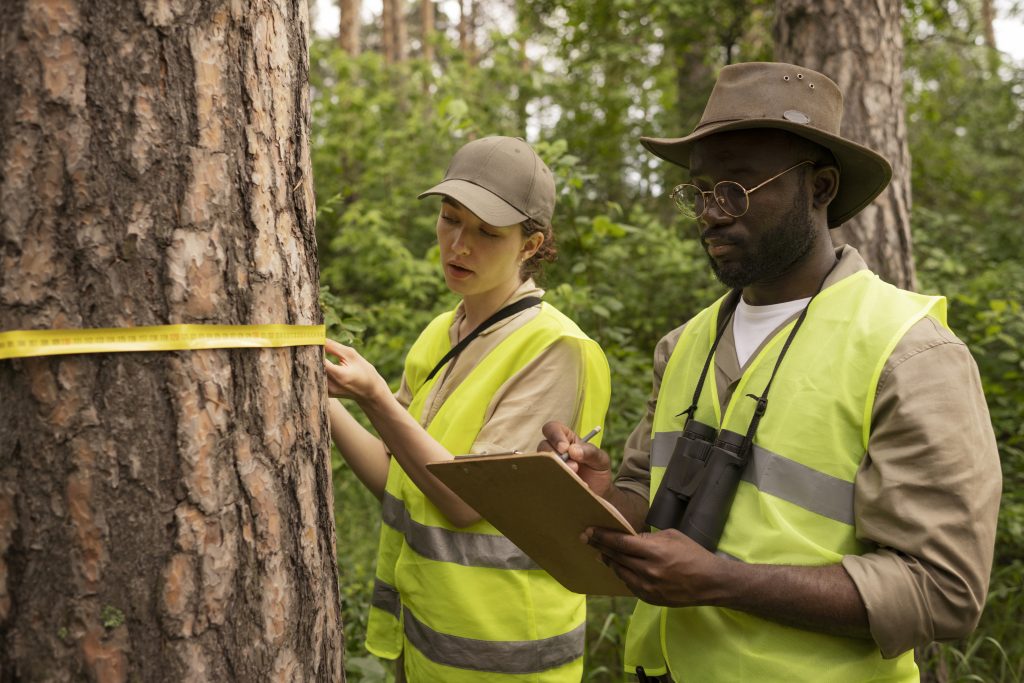
One of the main benefits of removing tree trunks is the improvement it brings to the overall aesthetics of the landscape. By eliminating unsightly tree stumps, you can create a more visually appealing environment. Additionally, removing tree trunks can also prevent potential hazards, such as tripping or falling accidents, especially in high-traffic areas.
However, there are also drawbacks to consider. Removing tree trunks can be a labor-intensive and time-consuming process, requiring specialized equipment and expertise. It can also have an impact on the surrounding soil and vegetation, potentially disrupting the ecosystem. Furthermore, the cost of tree trunk removal can vary depending on factors such as the size and location of the tree.
In conclusion, the decision to remove tree trunks comes with its own set of pros and cons. While it can enhance the landscape and mitigate risks, it can also be costly and have ecological implications. It’s crucial to carefully evaluate these factors before proceeding with tree trunk removal.
Transition into the subsequent section about ‘dos and don’ts: Now that you have considered the pros and cons, let’s explore some dos and don’ts when it comes to removing tree trunks.
Dos and Dont’s
When it comes to removing tree trunks, it’s important to follow certain dos and don’ts. While it may seem like a straightforward task, there are common mistakes that can lead to accidents or damage to property. By following these guidelines, you can ensure a safe and efficient tree trunk removal process.
Dos:
- Do assess the tree trunk carefully before starting the removal process. Look for any signs of decay, disease, or structural weakness that may affect the stability of the trunk.
- Do wear appropriate safety gear, including gloves, goggles, and a hard hat, to protect yourself from potential hazards such as falling branches or debris.
- Do use the proper tools for the job. Depending on the size and condition of the tree trunk, you may need a chainsaw, axe, or a stump grinder.
Don’ts:
- Don’t underestimate the importance of planning. Before removing the tree trunk, consider factors such as nearby structures, power lines, and the direction in which the trunk may fall.
- Don’t attempt to remove a tree trunk without proper training or experience. If you are unsure about the process, it’s best to hire a professional tree removal service.
- Don’t forget to clean up the area after removing the tree trunk. Clear away any debris and dispose of it properly to prevent accidents or injuries.
Mistakes to Avoid
To avoid common mistakes, it’s important to carefully assess the condition of the tree trunk before attempting removal. This step is often overlooked, but it can save you time, money, and potential accidents. One common mistake is underestimating the size and weight of the tree trunk. It’s crucial to accurately determine its dimensions to ensure you have the right equipment and manpower for the job. Additionally, failing to consider the health of the tree trunk can lead to unexpected difficulties during removal. If the trunk is decayed or diseased, it may be more brittle and prone to breakage, making removal a challenging task. Cost considerations are also important. Many people make the mistake of solely focusing on the upfront cost of removing the tree trunk without considering the potential long-term expenses. For instance, removing a large trunk without professional help can result in damage to nearby structures or utilities, leading to costly repairs. By carefully assessing the condition of the tree trunk and considering all cost implications, you can avoid these common mistakes and ensure a smooth removal process.
Key Takeaways
Now that you are aware of the mistakes to avoid when it comes to tree trunk removal, it’s important to understand the key takeaways from this process. There are several benefits to removing tree trunks from your property. Firstly, it improves the aesthetic appeal of your landscape, providing a clean and tidy look. Additionally, removing tree trunks eliminates potential hazards, such as tripping or falling accidents. It also prevents the spread of diseases or pests that may have affected the tree.
When it comes to techniques for tree trunk removal, there are a few options to consider. One common method is stump grinding, which involves using a specialized machine to grind the stump down to below ground level. Another technique is stump removal, where the entire stump is physically dug out of the ground. This method is more labor-intensive but ensures complete removal.
Transitioning into the subsequent section about specific action steps for tree trunk removal, it’s important to know the right approach for each technique. By following these steps, you can effectively remove tree trunks from your property without any hassle.
Specific Action Steps for Tree Trunk Removal
When it comes to removing a tree trunk, there are several important factors to consider. First and foremost, you will need the right tools for the job. This may include a chainsaw, an axe, a shovel, and a stump grinder, depending on the size and condition of the trunk. Secondly, safety precautions should be taken to ensure that you and others are protected throughout the removal process. This may involve wearing protective gear such as goggles, gloves, and a hard hat, as well as being mindful of any potential hazards in the surrounding area. Lastly, proper disposal methods must be implemented to ensure that the tree trunk is disposed of in an environmentally-friendly manner. This may involve recycling the wood or hiring a professional tree removal service to handle the disposal.
Tools Needed for Removal
You’ll need a chainsaw and an axe for tree trunk removal. When it comes to removing tree trunks, there are different techniques and disposal methods to consider. The first step is to assess the size and condition of the tree trunk. If the trunk is small and manageable, you can use a chainsaw to cut it into smaller sections. Start by making a horizontal cut at the base of the trunk, then make a vertical cut to create a notch. Next, make a final horizontal cut to remove the section. For larger trunks, an axe can be used to split the trunk into manageable pieces. Once the tree trunk is removed, proper disposal methods should be followed. This can include chipping the wood for mulch, donating it for firewood, or having it hauled away. However, before you begin the removal process, there are important safety precautions to consider.
Safety Precautions to Consider
Before starting, make sure you have the necessary safety gear to protect yourself during the tree trunk removal process. Safety should always be a top priority when dealing with heavy equipment and potentially dangerous techniques. When it comes to tree trunk removal, there are specific tools and techniques that can be employed to ensure a smooth and efficient process. Tree trunk removal equipment may include chainsaws, stump grinders, and winches, depending on the size and condition of the tree trunk. It is important to familiarize yourself with the proper operation and maintenance of these tools to prevent accidents. Additionally, understanding tree trunk removal techniques, such as cutting at the correct angle and using leverage, can help you safely and effectively remove the trunk. By following proper safety precautions and utilizing the right equipment and techniques, you can successfully remove tree trunks without putting yourself at risk. Now, let’s move on to discussing proper disposal methods for the removed trunks.
Proper Disposal Methods
Now that you know the safety precautions to consider when removing tree trunks, let’s discuss the proper disposal methods. When it comes to disposing of tree trunks, there are several options available to you. One common method is to have the tree trunks chipped into mulch. This mulch can then be used for various purposes such as landscaping or composting. Another option is to have the tree trunks hauled away for proper disposal at a designated facility. This ensures that the tree trunks are handled in an environmentally responsible manner. It is important to consider the environmental impact of tree trunk disposal. By choosing methods that promote recycling and proper waste management, you can minimize the negative effects on the environment. Remember to always research local regulations and consult with professionals to determine the most suitable disposal method for your specific situation.
Frequently Asked Questions
What Are the Potential Dangers or Risks Associated With Tree Trunk Removal?
Potential dangers and risks associated with tree trunk removal include injury from falling branches or debris, damage to property or nearby structures, and the risk of equipment failure. It’s important to hire trained professionals to minimize these hazards.
Are There Any Specific Tools or Equipment Required for Efficient Tree Trunk Removal?
To efficiently remove a tree trunk, you’ll need specific tools and equipment like chainsaws, stump grinders, and axes. Best practices include wearing protective gear, assessing the tree’s condition, and following proper cutting techniques.
How Long Does It Typically Take to Remove a Tree Trunk?
Removing a tree trunk can take anywhere from a few hours to a few days, depending on the size and complexity of the job. The process involves cutting, grinding, and hauling away the trunk and roots.
Can Tree Trunk Removal Be Done in All Seasons or Are There Specific Times of the Year That Are Better?
The best time for tree trunk removal depends on various factors, such as weather conditions and the specific tree species. It is important to consult with professionals who can assess the tree trunk removal process and advise on the optimal timing.
Are There Any Legal Requirements or Permits Needed for Tree Trunk Removal in Certain Areas?
Legal regulations and permits for tree trunk removal vary by location. It is important to research and comply with local laws to avoid any legal issues. Additionally, consider the environmental impact and explore eco-friendly options for tree trunk removal.
About Murray, Utah
Murray is a city situated on the Wasatch Front in the core of Salt Lake Valley in the U.S. state of Utah. Named for territorial governor Eli Murray, it is the state's fourteenth largest city. According to the 2020 census, Murray had a population of 50,637. Murray shares borders with Taylorsville, Holladay, South Salt Lake and West Jordan, Utah. Once teeming with heavy industry, Murray's industrial sector now has little trace and has been replaced by major mercantile sectors. Known for its central location in Salt Lake County, Murray has been called the Hub of Salt Lake County. Unlike most of its neighboring communities, Murray operates its own police, fire, power, water, library, and parks and recreation departments and has its own school district. While maintaining many of its own services, Murray has one of the lowest city tax rates in the state.
Neighborhoods in Murray, Utah
Murray Oakes, Grant Park, Southwood Park, Murray Park, Murray Park Restrooms, Willow Pond Park, Neighborhood Veterinary Care
Things To Do in Murray, Utah
Bus Stops in Murray, Utah to Truco Services, Inc.
Bus Stop in Murray Central Station (Bay C) Murray, Utah to Truco Services, Inc.
Bus Stop in State St @ 4801 S Murray, Utah to Truco Services, Inc.
Bus Stop in Murray North Station Murray, Utah to Truco Services, Inc.
Bus Stop in State St @ 4949 S Murray, Utah to Truco Services, Inc.
Bus Stop in Murray Central Frontrunner/Trax Station Murray, Utah to Truco Services, Inc.
Bus Stop in Murray Blvd / Vine St (SB) Murray, Utah to Truco Services, Inc.
Bus Stop in State St @ 3925 S Murray, Utah to Truco Services, Inc.
Bus Stop in State St @ 4824 S Murray, Utah to Truco Services, Inc.
Bus Stop in State St @ 5223 S Murray, Utah to Truco Services, Inc.
Bus Stop in Murray Blvd / Allendale Dr (NB) Murray, Utah to Truco Services, Inc.
Bus Stop in Murray Blvd @ 5039 S Murray, Utah to Truco Services, Inc.
Bus Stop in State St @ 4721 S Murray, Utah to Truco Services, Inc.
Driving Directions in Murray, Utah to Truco Services, Inc.
Driving Directions from Woodruff Tree Trimming and Removal to 4640 Commerce Dr, Murray, UT 84107, USA
Driving Directions from Reliable Tree Care to 4640 Commerce Dr, Murray, UT 84107, USA
Driving Directions from Tree Pro-Tech to 4640 Commerce Dr, Murray, UT 84107, USA
Driving Directions from Prestige Tree And Landscape to 4640 Commerce Dr, Murray, UT 84107, USA
Driving Directions from Excellence Tree & Landscape to 4640 Commerce Dr, Murray, UT 84107, USA
Driving Directions from Amen Trees to 4640 Commerce Dr, Murray, UT 84107, USA
Driving Directions from Tim's Tree Care to 4640 Commerce Dr, Murray, UT 84107, USA
Driving Directions from Jordan Tree Service - Murray to 4640 Commerce Dr, Murray, UT 84107, USA
Driving Directions from Arbor Works to 4640 Commerce Dr, Murray, UT 84107, USA
Driving Directions from Diamond Tree Experts to 4640 Commerce Dr, Murray, UT 84107, USA
Driving Directions from Green Tree Arborist to 4640 Commerce Dr, Murray, UT 84107, USA
Driving Directions from TruCo Services to 4640 Commerce Dr, Murray, UT 84107, USA
Reviews for Truco Services, Inc. Murray, Utah
Emily Abercrombie
We had a great experience with TruCo! They were well priced, responsive and prompt. Michael was a pleasure to work with and gave us advice on which plants to put in where we took out our ugly old shrubs. I would highly recommend this company!!!
Michelle Turpin
TruCo Services gets 5 stars from us for customer service. We experienced a few issues with their services this last year and Rob Eccles in senior management, stepped in and immediately handled our issues. He was very committed to making sure they understood our expectations and would execute to make us happy.
Siobhan Billingsley
I work for a property management company and have the pleasure of working with Rob at a community in Sandy. He has been incredible to work with and always responds in a timely manner. He knows all the homeowners by name and address and is aware of all the "problem" areas when it comes to sprinklers. I never have to worry about following up with him because he always reaches out to provide me with an update. If you're looking to work with someone who takes pride in their job, is professional, and can solve the worst landscaping problems thrown your way, Rob is your guy. Thank you, Rob for all you do!
Jaime S.
We have used Truco at 2 of the complexes we manage, they have been great to work with. Good quality service, outstanding customer service with good communication. That's hard to find these days. I highly recommend them. Travis has been awesome to work with.
Jerusha Smart
We use TruCo for a majority of our properties and our home. While other landscaping companies we use come and go for various reasons like cost, communication issues, work performance, etc., TruCo is always consistent in price and work. Also, Rob is the best.
